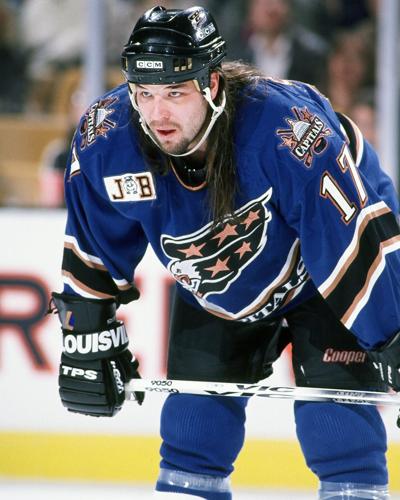A tragic reminder of the high cost of hockey violence | Chris Simon – Toronto Star
Hockey stands alone in its tolerance of fighting. Fights may stir the primal juices of fans and players. But at the cost of how many lives?
The family of former NHL player Chris Simon say they believe a progressive and fatal disease associated with repeated traumatic brain injuries is to blame for his death last week.

Driving into Wawa, Ont., off the TransCanada Highway, motorists pass — once beyond the signature Canada goose — a sign noting the Northern Ontario town as the home of former NHLer Chris Simon, then a street named in his honour near the local hockey rink.
Inside the almost-as-famous-as-the-goose Young’s General Store, a photo of Simon and other local hockey notables graces the wall behind the cash register.
In small-town Canada, hockey stars — especially Stanley Cup winners — are a big deal.
But a few kilometres outside town, high on a bank overlooking the Michipicoten River sits a gorgeous log home, almost the size of lodge, that once belonged to Simon, fell vacant due to his bankruptcy and languished on the market in a region where buyers of such luxury properties are few.
Locally, it became the well-known symbol of Simon’s fall. For just as professional hockey giveth, professional hockey can taketh away.
When Simon filed for bankruptcy in 2017, after earning more than $15 million in the NHL, plus his salary for playing in Russia’s KHL, he was more than a half-million dollars in debt and was years behind in child support payments.
As the Star’s Bruce Arthur reported, Simon said at the time that he suffered from depression and anxiety, had PTSD and arthritis in his hands, back, shoulder, knees and neck.
In short, he inhabited a world of pain.
Chris Simon, of proud Ojibwa heritage, took his own life last week at age 52.
His family said they believe the six-foot-four, 235-pound father of four, who won a Cup with the Colorado Avalanche, suffered from chronic traumatic encephalopathy, a progressive disease associated with repeated brain injuries, many suffered during on-ice fights.
“The family strongly believes and witnessed first-hand that Chris struggled immensely from CTE, which unfortunately resulted in his death,” the family said in a statement.
Columbia University researchers have documented the toll taken on hockey enforcers, reporting — after analyzing data from some 6,000 players — that they died a decade younger on average than peers with similar hockey experience. And they were more likely to die of suicide and drug overdose.
In early death, Simon joined the ranks of such hockey pugilists as Bob Probert, Derek Boogaard, Wade Belak and Rick Rypien.
NHL commissioner Gary Bettman called Simon’s death tragic, but reiterated the league’s view that the link between fighting and premature death hasn’t been proved and that progress has been made to make the game as safe as possible.
Still, Simon’s death comes at a propitious moment.
With the recent arrival in the NHL of the New York Rangers’ six-foot-seven fighting enthusiast Matt Rempe, since suspended for repeated headhunting penalties, there has been a renewed celebration of hockey brawling.
Talking heads on TV sports panels have been almost giddy with Rempe taking on other league tough guys, including Toronto’s Ryan Reaves, who was delighted by the apparent trend to “make hockey violent again.”
It’s been dismaying of late to see hockey scrappers meet at centre ice pre-game to arrange their scripted bouts. Just as it’s been disturbing to see the trend to any solid bodycheck being responded to with a fight.
In professional sports, hockey stands alone in its tolerance — and through its leniency, implicit endorsement — of fighting.
Source: Toronto Star